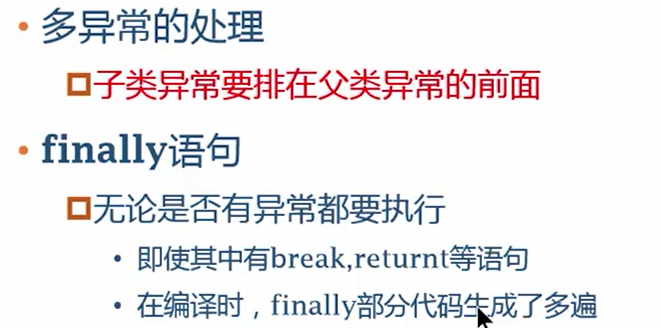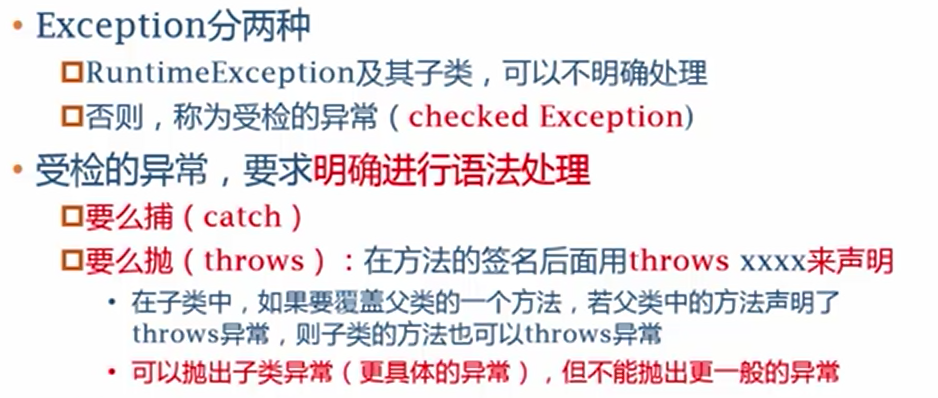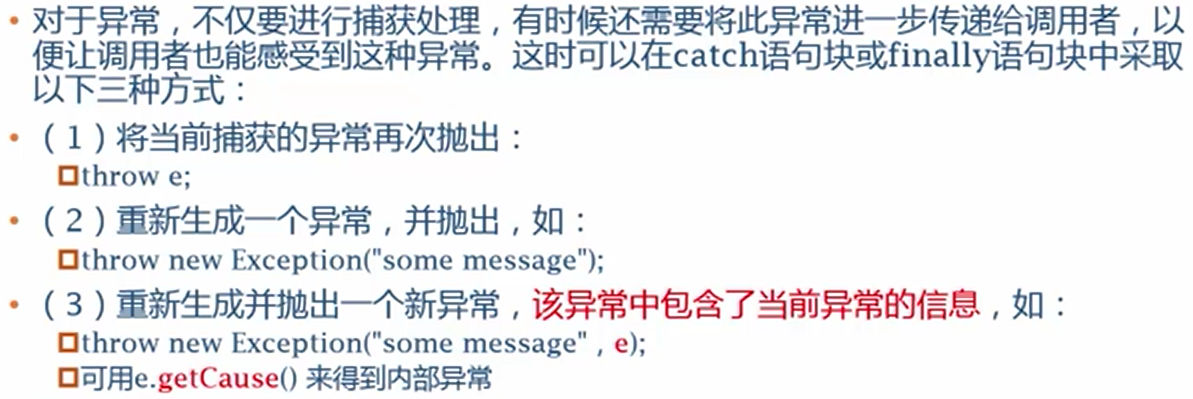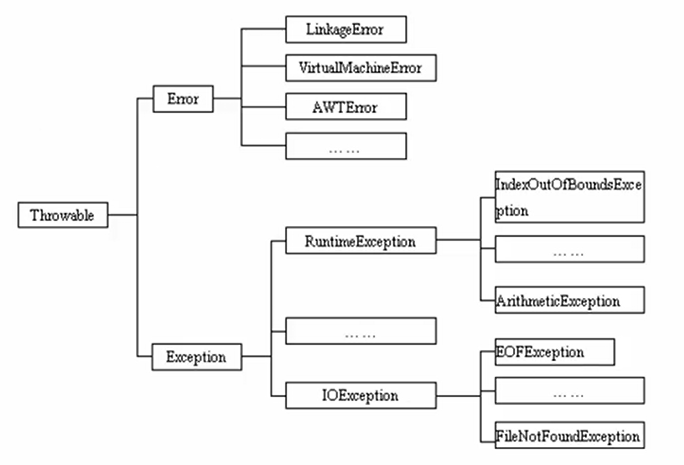1 try-catch 语句
基本与 C++ 中的一致。
public static void main(String args[]) {try {BufferedReader in = new BufferedReader(System.in));System.out.print("Please input a number: ");String s = in.readLine();int n = Integer.parseInt(s);} catch (IOException ex) {ex.printStackTrace();} catch (NumberFormatException ex) {ex.printStackTrace();}}
运行时系统在调用栈中查找,从生成异常的方法开始进行回溯,直到找到
catch语句的代码。
1.1 抛出异常
throw 异常对象;
1.2 捕获异常
try {// ...} catch (异常类名 异常形参) { // 可选// ...} catch (异常类名 异常形参) {// ...} finally { // 可选}
1.3 异常的分类
ThrowableError: JVM 错误Exception: 异常一般所说的异常是指
Exception及其子类
1.3.1 Exception 类
- 构造方法
public Exception();public Exception(String message);Exception(String message, Throwable cause);
- 方法
getMessage()getCause()printStackTrace()
1.3.2 多异常的处理

下面这个例子展示了 finally 的情况。
public class TestTryFinally {static String output = "output ";public static void main(String args[]) {foo(1);System.out.println(output);}public static void foo(int i) {try {if (i == 1) {throw new Exception();}output += "1";} catch (Exception e) {output += "2";return;} finally {output += "3";}}}// 输出结果// output 23
1.3.3 受检的异常

RuntimeException异常可以直接使用if语句处理。main函数也可以写throws
下面是 throws 的例子:
import java.io.*;public class TestTryThrowsToOther {public static void main(String args[]) {try {System.out.println("======Before======");readFile();System.out.println("======After=======");} catch (IOException e) {System.out.println(e);}}public static void readFile() throws IOException {FileInputStream in = new FileInputStream("test.txt");int b;b = in.read();while (b != -1) {System.out.print((char) b);b = in.read();}in.close();}}
1.4 try-with-resource
try ( 类型 变量名 = new 类型 () ) {// ...}// 相当于自动添加了 finally { 变量.close(); }// 当然,变量必须是 Closable 的
2 自定义异常

重抛异常以及异常链接
下面是关于异常链接(多层异常)的例子:
import java.io.*;public class hello {public static void main(String args[]) {try {BankATM.getBalanceInfo(12345L);} catch (Exception e) {System.out.println("something wrong: " + e);System.out.println("cause: " + e.getCause());}}}class DataHouse {public static void findData(long id) throws DataHouseException {if (id > 0 && id < 1000)System.out.println("id: " + id);elsethrow new DataHouseException("cannot find the id");}}class BankATM {public static void getBalanceInfo(long id) throws MyAppException {try {DataHouse.findData(id);} catch (DataHouseException e) {throw new MyAppException("invalid id", e);}}}class DataHouseException extends Exception {public DataHouseException(String message) {super(message);}}class MyAppException extends Exception {public MyAppException(String message) {super(message);}public MyAppException(String message, Exception cause) {super(message, cause);}}// 输出结果// something wrong: MyAppException: invalid id// cause: DataHouseException: cannot find the id


